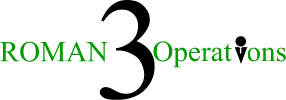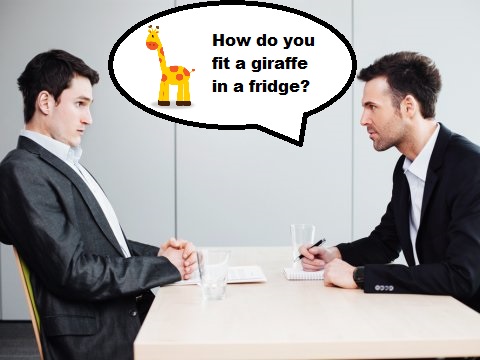Does Your Workplace Have a Culture of Complacency?
Don’t you just love order and predictability?
It is human nature to look for order and comfort. There is a sense of harmony in predictable environments that ultimately lead us to what we all strive for – Safety. Feeling safe is really the ultimate goal. It is the natural by-product that comes from meaningful relationships, financial security, and continuous employment.
As with anything, too much of a good thing can cause problems. Accordingly, the comfort that comes from a sense of safety has its dark side too. The inherent problem that comes from too much comfort and predictability is that we become acclimatized to it; we become dependent on it and will go to great lengths to keep it, even to our own detriment. As individuals, this dependence on comfort often manifests itself as complacency. We become complacent in our lives, stop pushing ourselves, and often abandon our ambitions in order to stay comfortable – don’t rock the boat. In addition to the individual dangers that come with complacency, there is a much greater threat – working in a culture of complacency.
From an organizational and business perspective, the dangers of a culture of complacency can erode the very foundation of an organization’s business plan, as well as ruin its employee base. In short, a culture of complacency can act as a cancer to an organization’s current and future success.
What does a Culture of Complacency look like?
There are many symptoms of complacency, and they can reveal themselves in many ways. In his book A Sense of Urgency, John Kotter (2008) explains three ways in which these symptoms can manifest themselves.
– Low overall performance standards, often in organizations that have fallen asleep with the same people in leadership positions for more than a decade with little turnover.
– A lack of sufficient performance feedback from external sources, such as not really listening to customer complaints to realize that the products do not meet the needs of the client.
– A kill-the-messenger-of-bad-news, low candor, low confrontation culture, often, found in family-owned businesses where influence does not go both ways.
A Forbes article titled: 10 Signs Your Employees Are Growing Complacent In Their Careers highlights some symptoms that look like:
– Employees stop asking questions
– People stop taking the initiative
– Everyone is playing it too safe
– No one is showing passion in their work
What is a Culture of Complacency?
The Elements of a Culture of Complacency can be summarized into 4 main components.
Comfortable and Traditional Methods
Phrases like: “This is how we have always done it” and “If it ain’t broke, don’t fix it” accurately summarize this element. People naturally default to the steps and processes that are familiar and routine because of the comfort that comes with them. There is also an unwillingness to break from tradition, an inherent fear of change, and a fear of failure that can cause an aggressive adherence to what is comfortable and familiar.
Rigid Thinking
In a Culture of Complacency there is often a lack of awareness of what is happening outside an individual’s normal environment, as well as a lack of outside perspective to the internal habits and practices of the organization. Naively looking at information, ideas, and opportunities as good or bad overlooks the inherent complexity of most situations. Rigidly looking at the extremes of things is a common symptom of a Culture of Complacency. If you only see things as black or white you miss the grey, which is where most of the world operates.
Finding the No
When approached with a new-found opportunity or new idea, many people’s first instinct is to find the quickest way to say no. This is one of the most prominent elements of a Culture of Complacency. When something outside the norm or comfortable flow is brought up there is a compulsion to find a way to delegitimize it or over complicate it, so that it fails. This is a problem-focused approach, where people put effort into finding problems and roadblocks to stop something that does not fit into their common practice. This is the opposite of a solution-focused approach, where individuals put effort into discovering solutions and adaptations in order to establish a way to make something work that is considered outside the common practice.
Unconfident and Low-Profile Leadership
Perhaps the most impactful element of a Culture of Complacency is unconfident and low-profile leadership that creates an expectation of mediocrity. In an environment where leadership is focused on a “don’t rock the boat” mentality it creates an environment where the other 3 elements of complacency are able to fester and grow. This type of leadership is most commonly a result of two major factors; apathy and inconsistency. When leaders do not inspire their teams and inspire in them a sense of confidence in their work, teams usually turn to safety in traditional and common practice. This is often the only way to survive. A leader’s job is to make their team feel safe; safe to ask questions, safe to bring new ideas, safe to take risks. Without this sense of safety (which we stated earlier is something we all strive for), a sense of complacency starts to grow in its place.
How to Identify a Culture of Complacency
The first thing for a person to consider when attempting to identify if they have a culture of complacency is to ask – do you spend your days trying to be busy, or do you spend you time trying to be better? Many people spend their entire career going into work every day, putting in a full day of work, and being very busy while they are at work. Nevertheless, they still live in a culture of complacency. Some of the questions for a person to ask in order to determine if they are in a Culture of Complacency include: Are you trying to be as busy as yesterday or better than yesterday? Is your goal to be in a predictable environment or a productive environment?
How to Combat a Culture of Complacency
When endeavoring to challenge a Culture of Complacency, it can be tackled on two fronts: Individual and Organizational. When attempting to challenge it on an individual level, people need to first embrace the paradox of finding comfort in being uncomfortable. Look for challenge and personal/professional growth as where comfort can be found. The excitement that comes with being better every day needs to be what sustains individuals rather than the predictability of the job itself. When attempting to challenge Culture of Complacency on an organizational level, the first step is to institute a cultural shift toward a Culture of Innovation. This needs to start with leadership and it needs to happen both top-down and bottom-up.
The Takeaway
A Culture of Complacency is a very complex and layered concept. Its impact extends beyond the productivity of an organization and affects workplace safety, customer satisfaction, employee turnover, governance, and more. The negative impact it has on virtually every aspect of the workplace can be the breaking point of any organization.
It is important to be reflective of both your situation and that of your organization and to understand the warning signs and effects that a Culture of Complacency has on your professional life. It is important to take the time to ask yourself “Are you looking to protect your predictability or protect your productivity?”. It is also important to recognize that discomfort, innovation, and a willingness to take risks are the beginnings of both evolution and progress.
Roman 3 is an advising and solutions firm that specializes in inspiring progressive action, creating a culture of innovation, and assisting organizations in implementing transformative change. We help you build capacity, collaborate, be progressive, and grow to your full potential. For more information on our services and support reach out to us at info@roman3.ca



